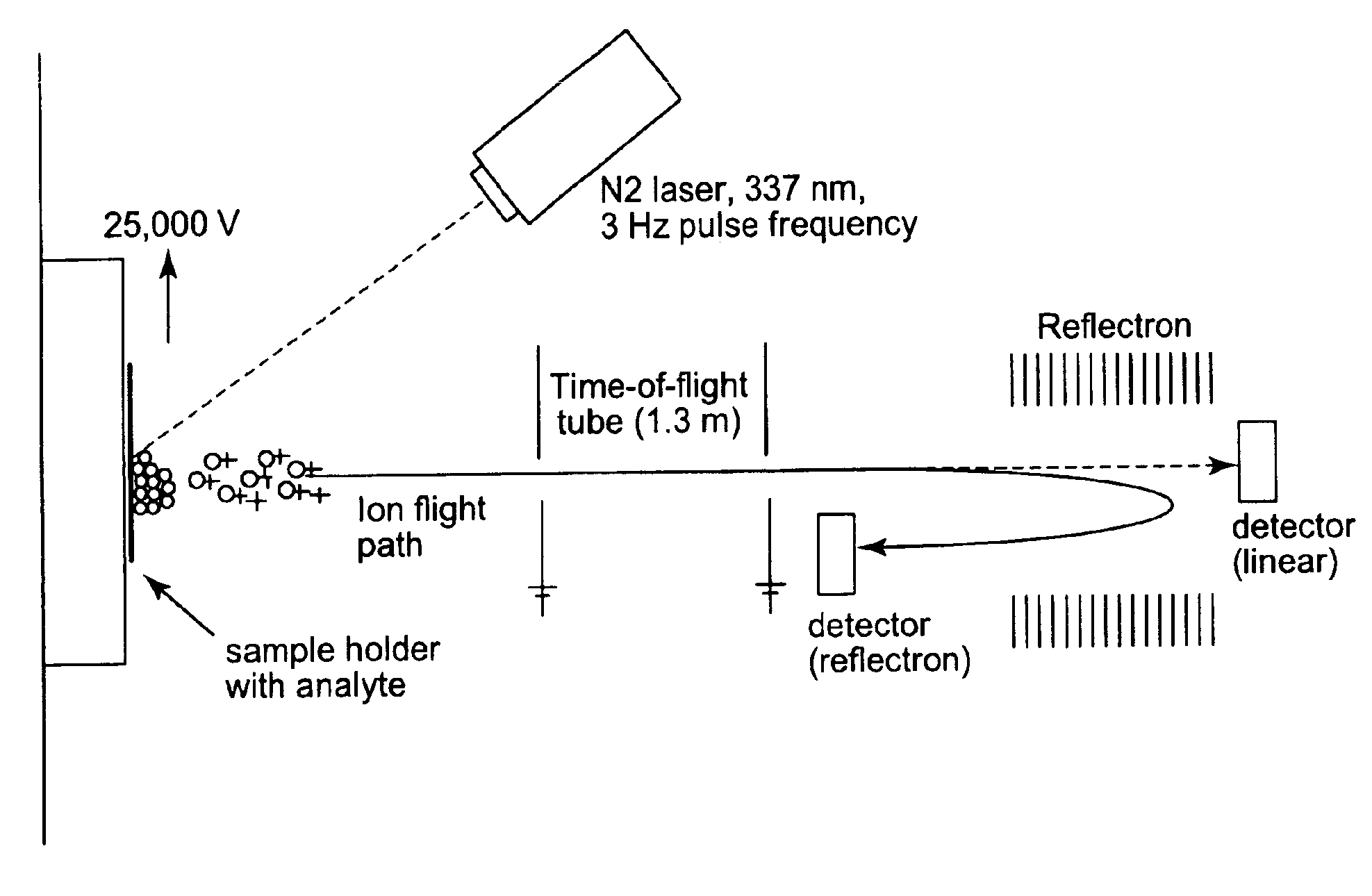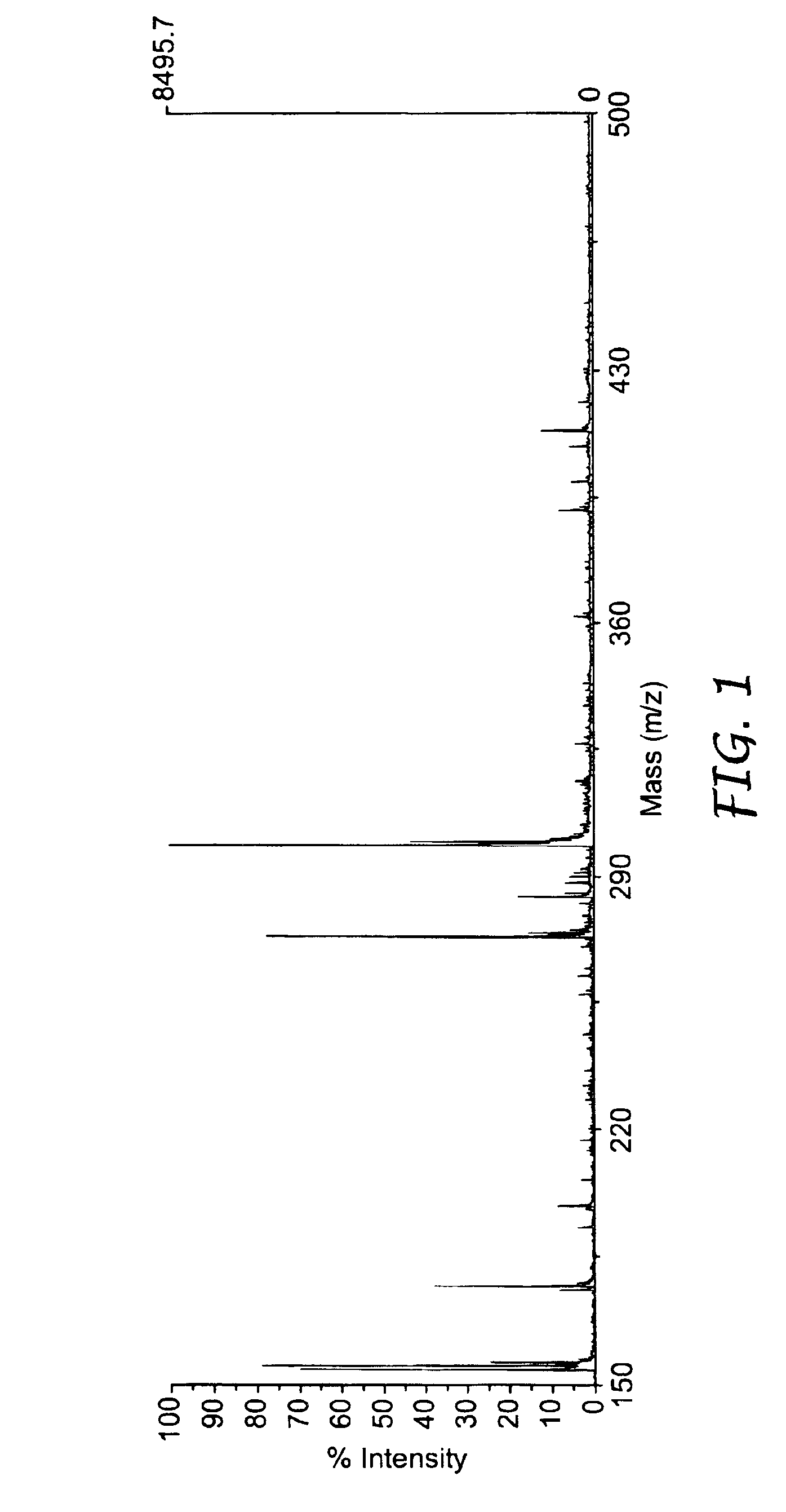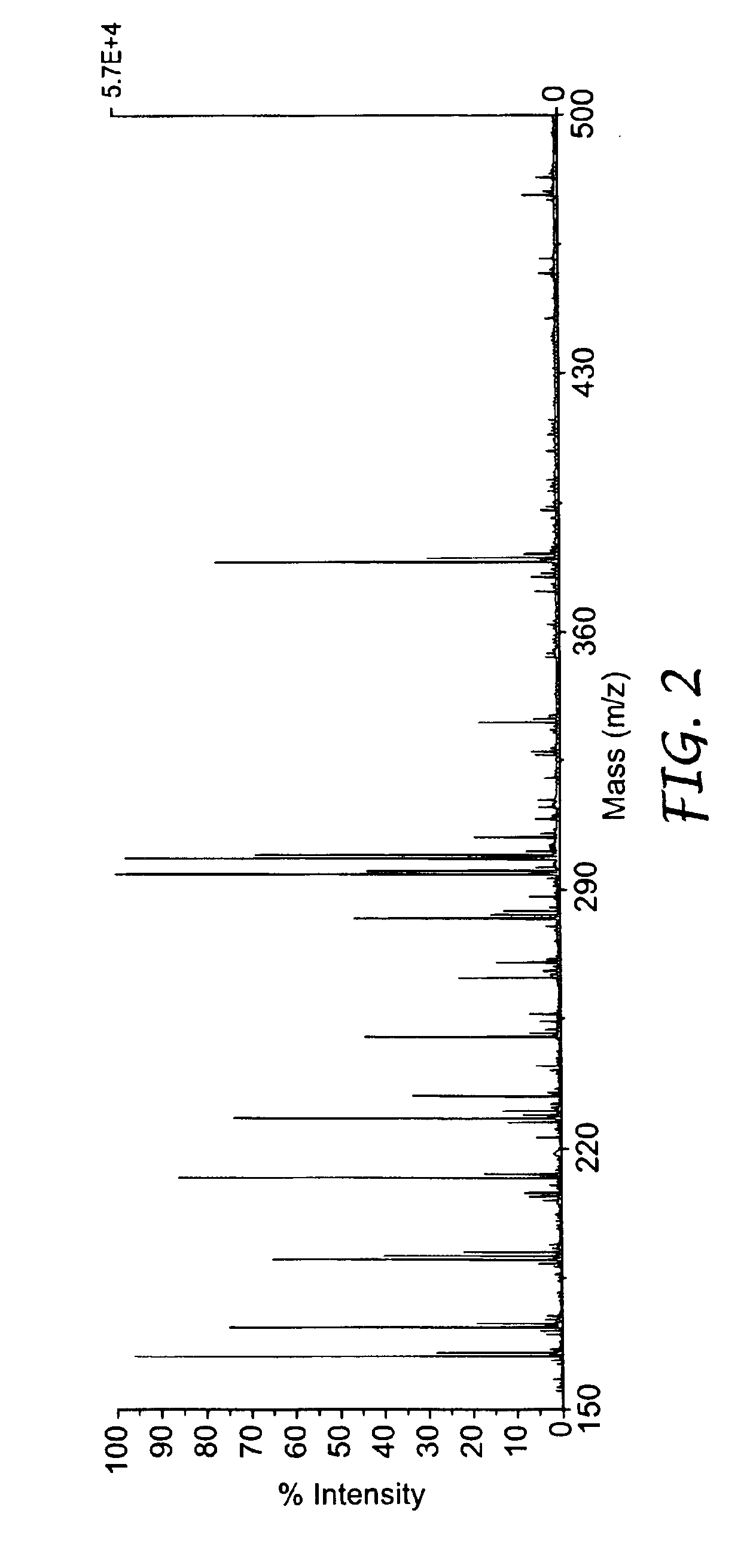Microstructured polymeric substrate
a polymer substrate and microstructure technology, applied in the field of substrates, can solve the problems of difficult ionization of intact analyte molecules without molecular fragmentation, interference with analysis of the mass spectra of other materials, and many other undesirable consequences of chemical matrices, and achieves enhanced desorption of analytes, superior performance, and high signal-to-noise ratio
- Summary
- Abstract
- Description
- Claims
- Application Information
AI Technical Summary
Benefits of technology
Problems solved by technology
Method used
Image
Examples
example 1
[0124]This example illustrates the use of a microstructured substrate with and without a chemical matrix.
[0125]Polypropylene film bearing the TYPE A structure (henceforth referred to as PPTYPE A) was produced as described previously. A metal mask with a ten by ten grid array of 1.19 mm diameter holes was adhered to the microstructured side of the film using ReMount™ removable spray adhesive. The film was then vapor coated with aluminum, as described previously, after which the metal mask was removed. The resulting films thus contained 1.19 mm diameter spots of aluminum. (PPTYPE A coated with aluminum is henceforth referred to as polypropylene with microstructured surface TYPE A and an aluminum film).
[0126]Samples for analysis were prepared with 0.1 mg of three common drug compounds: acetaminophen (151.17 Da), ascorbic acid (176.12 Da), and penicillin (389 Da). These drug compounds were dissolved in 1.0 ml of a 1:1:0.001 methanol / water / trifluoro acetic acid solution. A volume of 0.5 ...
example 2
[0130]This example illustrates the use of polypropylene with the TYPE A structure and with the matte finish structure, coated with aluminum.
[0131]Matte finish polypropylene was obtained by extrusion of polypropylene resin against a matte finish metal roll as described previously. Polypropylene bearing the TYPE A structure was obtained as described previously. Both films were coated with a continuous layer of aluminum as described previously.
[0132]One small molecule, clonidine (266.6 Da), and two peptides, substance P (1347.6 Da) and angiotensin II (1046.2 Da), were obtained from Sigma Chemical Co. (St. Louis, Mo.) and were used without further purification. A solution containing 100 ng / μL of each analyte in 50:50 HPLC grade acetonitrile / water with 0.1% trifluoro acetic acid was made for the small molecule. A solution containing 1000 ng / μL of each analyte in 50:50 methanol / water with 0.1% trifluoro acetic acid was made for each of the peptides. A volume of 0.5 μL-3.0 μL of analyte wa...
example 3
[0136]This example illustrates the results of mass spectrometry analysis using films with various structures. In all cases the film is polypropylene and the coating is aluminum followed by hydrophilic DLG (H-DLG). The structures are: nonstructured (made by extrusion onto a polished metal roll), matte finish (made by extrusion onto a matte finish silicone belt), matte finish (made by extrusion onto an unpolished, matte finish metal roll) and the TYPE A structure, all obtained as described previously.
[0137]A metal mask with 2.00 mm diameter holes was adhered to each film via ReMount™ removable spray adhesive. The samples were then coated with aluminum followed by H-DLG, using methods and apparatus and described previously, after which the mask was removed. The resulting films contained superimposed 2.00 mm diameter spots of aluminum and H-DLG.
[0138]One small molecule, clonidine (266.6 Da), and one peptide, substance P (1347.6 Da), were obtained from Sigma Chemical Co. (St. Louis, Mo.)...
PUM
 Login to View More
Login to View More Abstract
Description
Claims
Application Information
 Login to View More
Login to View More - R&D
- Intellectual Property
- Life Sciences
- Materials
- Tech Scout
- Unparalleled Data Quality
- Higher Quality Content
- 60% Fewer Hallucinations
Browse by: Latest US Patents, China's latest patents, Technical Efficacy Thesaurus, Application Domain, Technology Topic, Popular Technical Reports.
© 2025 PatSnap. All rights reserved.Legal|Privacy policy|Modern Slavery Act Transparency Statement|Sitemap|About US| Contact US: help@patsnap.com



